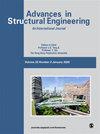TC11 钛合金开放式整体微叶轮的多轴数控精加工和表面粗糙度预测
IF 2
4区 工程技术
引用次数: 0
摘要
钛合金开放式整体微叶轮在多轴数控加工领域具有材料强度高、去除率高的特点。流道细小,叶片薄且扭曲度高。表面精度难以控制,容易出现过切和欠切。考虑到微型叶轮加工的技术难度,NX2212 软件后处理模块规划了两条不同的叶片精加工工艺路线,并通过虚拟机床仿真进行验证。验证完成后,将刀具路径加工代码导入 MATLAB 进行数据拟合。根据仿真结果确定工件表面工作条件,计算叶片表面粗糙度值,并在有限元分析软件中创建叶片精加工的物理仿真模型。结果表明,"分段分区域切割 "加工方法可以很好地提高刀片精度。叶片前缘和后缘的表面粗糙度分别增加了 4.86% 和 4.19%。使用白光干涉仪测量了微型叶轮的表面形态,并使用两种不同的加工方法对其进行了数控加工。研究结果表明,有限元分析软件计算出的表面粗糙度值与实验测量出的表面粗糙度值之间存在显著差异,两者相差不到 5%。在二阶响应面法的基础上,使用三因素、三级 BBD 实验研究了切削参数对微结构部件表面粗糙度的影响。研究结果表明,在合理的切削参数范围内,每齿进给量比切削深度和切削速度对表面粗糙度的影响更大;切削速度越低或越高,表面粗糙度越高;同时提高每齿进给量和切削速度可降低表面粗糙度;使用二阶响应面法可准确预测和控制表面粗糙度。本文章由计算机程序翻译,如有差异,请以英文原文为准。
Multi-axis CNC finishing and surface roughness prediction of TC11 titanium alloy open integral micro impeller
The titanium alloy open integral micro impeller has a strong material strength and high removal rate in the field of multi-axis CNC machining. The flow channel is tiny and the blades are thin and highly twisted. It is difficult to control the surface accuracy and prone to overcutting and undercutting. The NX2212 software post-processing module plans two distinct blade finishing process routes and verifies them using virtual machine tool simulation, taking into account the technical challenges of micro impeller machining. Following verification, the tool path machining code is imported into MATLAB for data fitting. The workpiece surface working condition is determined based on the simulation findings, the blade surface roughness value is calculated, and a physical simulation model of blade finishing is created in the finite element analysis software. The outcomes demonstrate how well the “segmented and sub-regional cutting” processing method may raise blade accuracy. The leading and trailing edges of the blade both had surface roughness increases of 4.86% and 4.19%. The surface morphology of the micro impeller is measured using a white light interferometer, and it is CNC machined using two distinct process methods. The findings demonstrate that there is a significant difference between the value calculated by the finite element analysis software and the surface roughness value measured experimentally which together make up less than 5%. An investigation of the impact of cutting parameters on the surface roughness of micro-structure components is carried out using a three factor, three-level BBD experiment that is founded on the second-order response surface method. The findings indicate that the feed per tooth influences surface roughness more significantly than cutting depth and cutting speed for a reasonable range of cutting parameters; Surface roughness will rise with lower or higher cutting speeds; Raising the feed per tooth and the cutting speed simultaneously may reduce surface roughness; Surface roughness can be accurately predicted and controlled using the second-order response surface method.
求助全文
通过发布文献求助,成功后即可免费获取论文全文。
去求助
来源期刊

Advances in Mechanical Engineering
Engineering-Mechanical Engineering
自引率
4.80%
发文量
353
期刊介绍:
Advances in Mechanical Engineering (AIME) is a JCR Ranked, peer-reviewed, open access journal which publishes a wide range of original research and review articles. The journal Editorial Board welcomes manuscripts in both fundamental and applied research areas, and encourages submissions which contribute novel and innovative insights to the field of mechanical engineering
 求助内容:
求助内容: 应助结果提醒方式:
应助结果提醒方式:


